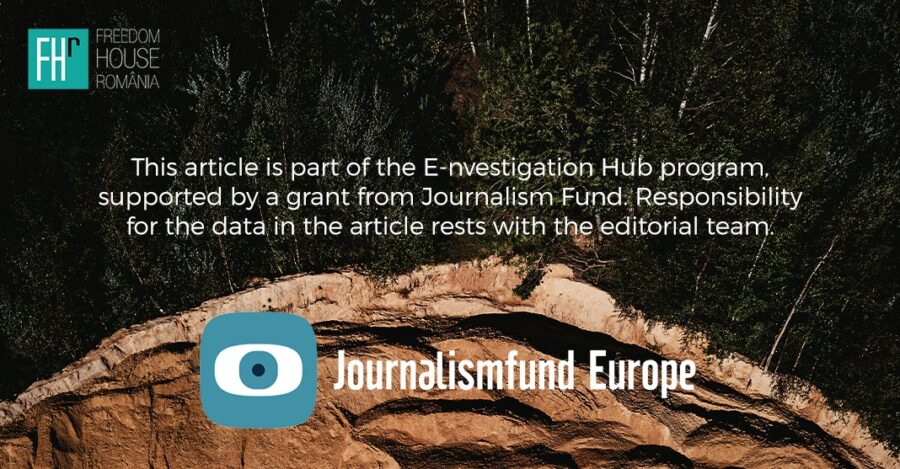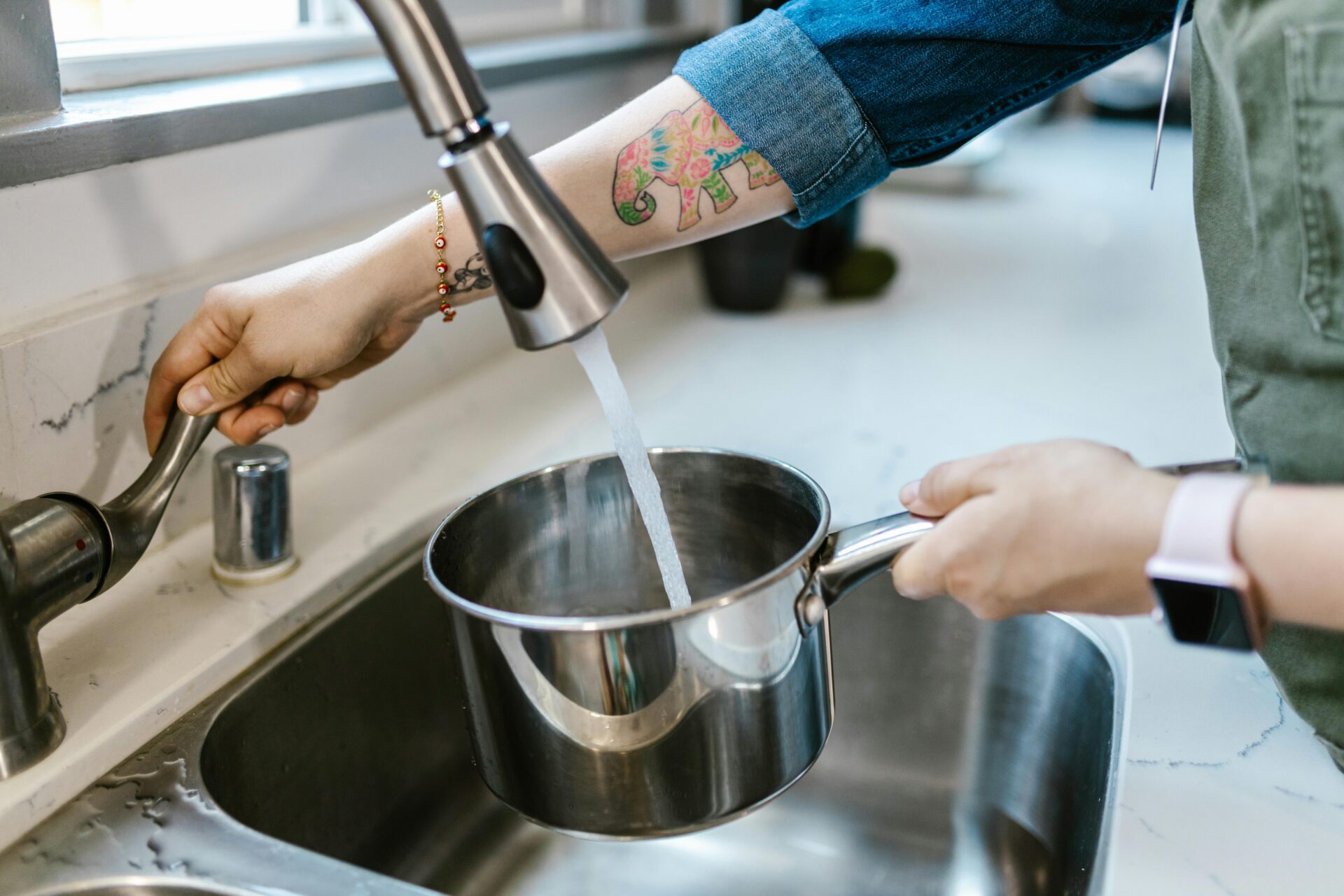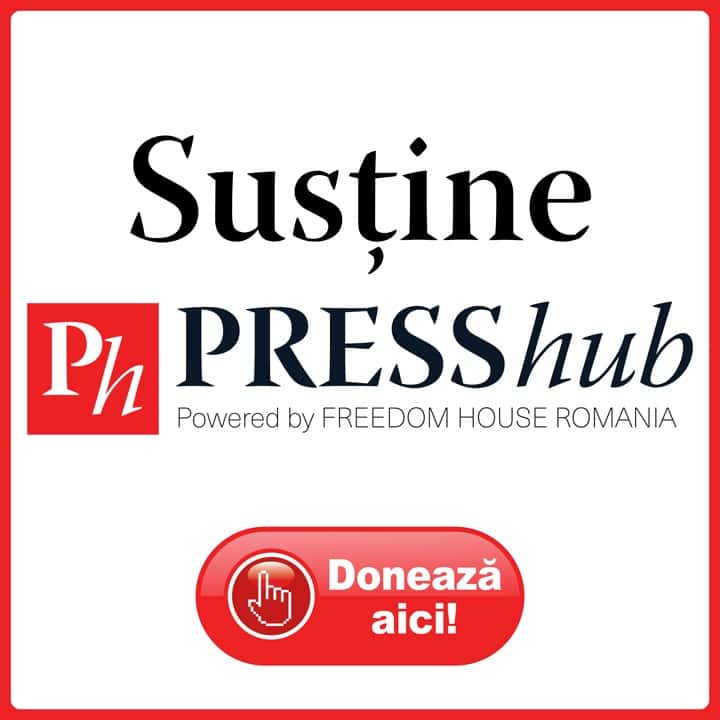A case analysis focused on the price of drinking water in Romania, which shows that water has… political color! And why are we not yet where we promised when we joined the European Union?
Because low water prices on the population are imposed, politicians have to allocate money from local budgets to water companies that otherwise cannot support themselves financially from the revenues they collect.
Read also: What Mr. Beast did in Romania. The Turda Salt Mine Closed for Him
The price of drinking water and sewage is kept at a minimum for political reasons… However, the money allocated from local budgets also comes from the citizens, they pay the difference, so it is just a trick… That is why it is very likely that after this year’s elections prices will start to rise.
The price of water is only rising
Drinking water is delivered to the population through regional operators, generally at county level, which are coordinated by a Community Development Association (ADI APĂ-CANAL) and run by a board of directors appointed, usually on political criteria, by the party that runs the County Council.
In the case of Bistrița-Năsăud County, it is the Social Democratic Party (PSD), which, through its president Emil Radu Moldovan, exerts a certain influence over Aquabis SA Bistrița, the regional water operator, but also within ADI Apă Canal where the County Council is the most important player, along with the town and commune mayors.
The regional water operator Aquabis SA Bistrița has asked the National Regulatory Authority for Community Services of Public Utilities (ANRSC) to adjust prices since December 2023, but the increase was only applied from April 11, 2024 and prices were only adjusted by the inflation rate.
Prices have actually increased for water by 0.63 lei/mc (excluding VAT) and for sewerage by 0.53 lei/mc (excluding VAT). Even if these increases are small, the adjustments place Bistrița in tenth place among the counties with the highest drinking water prices.
The top 10 counties with the highest drinking water prices are: Brăila, Buzău, Vaslui, Caraș-Severin, Galați, Călărași, Botoșani, Iași, Covasna and Bistrița-Năsăud.
What regulator authority ANRSC says about price developments
In a response requested by saptamana.online, ANRSC president, Ionel Tescaru, specifies that „the price/tariff levels practiced by the regional operators that provide/perform public water supply and sewerage services in the above mentioned counties are based on the tariff adjustment rules provided for in the tariff strategies developed for the implementation of investment projects in water/wastewater infrastructure developed with non-reimbursable funds granted by the European Union and which constitute a condition for financing all financing contracts concluded with the Ministry of European Investments and Projects (M.I.P.E.)”.
In order to clarify things, we spoke to an expert who explained that „water price adjustments are made in real terms and with inflation. The percentages of adjustments are calculated by financial experts in the Cost Benefit Analysis (CBA), a document that is only done for operators that access European funds from the MIPE (Ministry of European Investments and Projects).
In the CBA, increases are foreseen for 5 years, which will ensure that the operator will have the necessary funds to pay the installments on the loans it has accessed to co-finance these projects. According to the CBA, adjustments are made once a year, either in January or in July (editor’s note: operators who did not increase the price in January for electoral reasons will most likely do so in July this year).
Operators that have not accessed European funds and have no loans to repay are not obliged to have a tariff strategy, and tariff increases can be as high as they consider.
In the county of Bistrița-Năsăud as of April 11, 2024, throughout the operating area, the prices and tariffs practiced by Aquabis S.A. are as follows:
– for drinking water produced, transported and distributed, the price is 7.96 lei/mc (excluding VAT); 8.67 lei/mc (with 9% VAT);
– for sewage – sewage treatment, the tariff is 6.69 lei/cm (excluding VAT); 7.29 lei/cm (VAT 9%).
Main campaign attack: the price of drinking water
The main topic of attack in the election campaign just ended in June 2024 was exactly the high price of drinking water, with accusations being made against Emil Radu Moldovan and the Aquabis management, which includes his brother Macarie Moldovan – deputy general manager.
Anticipating these reactions from the National Liberal Party (PNL), the president of the County Council of Bistrița-Năsăud, Emil Radu Moldovan asked the management of Aquabis SA during the County Council meeting on March 29 to find solutions to reduce prices. A request that is however belated, since the price was already fixed.
„The 19 shareholders of Aquabis must sit down with the management of Aquabis, after the tenders have passed, to find solutions to lower the price. This will be the main task of the next term of Aquabis management.
After many years of increasing prices, according to the credit agreement with the European Investment Bank, the European Development Bank and all the others, in the next stage, following the major investments that have been made in the water-canal infrastructure in Bistrița-Năsăud County, we will have to look for the necessary solutions to make it more efficient and to reduce prices for the population”, said Radu Moldovan, at the county council meeting on March 29 this year.
What investments have been made in drinking water and sewerage infrastructure in Bistrița-Năsăud County and what’s next
The county of Bistrița-Năsăud is one of the first counties that have accessed European funds for the modernization and extension of water and sewerage networks through the so-called ISPA funds accessed by the regional operator Aquabis SA Bistrița, in the amount of 29,215,824 euro. Subsequently, European funds were accessed through POS MEDIU, major project „Extension and modernization of water and wastewater infrastructure in Bistrița-Năsăud County”, the total amount at the completion of the project was 200,951,886 lei (without VAT).
Because savings were made in this major project, it was possible to access funds for additional works through a new project, „Extension of water supply networks, sewerage, wastewater treatment and individual connections in localities in Bistrița-Năsăud County” with a value at project completion of 64,234,279 lei (excluding VAT).
The Regional Project for the Development of Water and Wastewater Infrastructure in Bistrița-Năsăud County (SMIS Code 109456) is currently being implemented.
„The project is particularly important for the whole county of Bistrița-Năsăud. There has practically never before been an investment of this size in the county. More than 200 million euro will be invested in the extension of water and sewage systems and the rehabilitation of existing ones. Ten water plants and treatment plants will be modernized or built, almost 1100 km of water and sewage mains and networks will be built or rehabilitated, in addition to dozens of drinking water storage tanks and pumping stations”, said Ion Șandru, general manager of AQUABIS S.A. at the launch of the project.
How data help us make accurate comparisons and observations
We do not know now if Radu Moldovan’s statement on the need to reduce water prices is populist and meant to extinguish some of the fights from the local electoral campaign, or it is a well-targeted objective for the new management of Aquabis. It remains to be seen over time whether or not this hypothesis is confirmed.
Until then, by analyzing the open data, we disprove the fact that Bistrița-Năsăud has the most expensive drinking water in all of Transylvania. In reality, the county of Covasna has the highest price for drinking water in Transylvania, i.e. 8.07 lei (without VAT) and you can see this on a map, where you can easily see the color differences depending on the values entered.
)As the price of water has become the subject of electoral battles in many parts of the country, saptamana.online has put together this infographic with the price of water all over Romania, which you can see here and take it into your own materials. The map of drinking water prices in Romania is based on data available for June 2024 on the ANRSC (regulatory authority) website.
The price of drinking water, an election issue in the run-up to the local elections, continues to be politically manipulated in various ways
In some counties, such most of the ones in Transylvania, there is a preference for keeping water and sewage prices low. However, this is a false impression which misleads citizens. In fact, these low prices do not cover the real costs of production and the prices are subsidized by budgetary funds allocated either by the town halls or the county councils, which citizens still pay through local taxes.
Therefore, although the price of water is apparently low in some counties (Bihor, Cluj, Sălaj, Maramureș, Satu-Mare, etc.), in fact, citizens pay the difference in price because the local budget allocates funds to these companies so that they can operate with prices at this level.
In the budget of the Compania de Apă Someș S.A. (water company) we find zero lei allocated as subsidies, but in the chapter Investments 349.856 lei are allocated from the budget.
This explains why it can maintain the lowest drinking water price in Transylvania, because the operator does not base its investment effort on sales revenues, but on local, governmental or European budget funds.
For example, the operators in the counties mentioned have not updated their prices since 2023, even though inflation in Romania is breaking records in Europe and is currently 5.9%. However, this being an election year, prices in some counties have not been increased. For example, in Bihor county, the operator S.C. Apă Canal Nord Vest S.A., Bihor county, asked to change the price of drinking water on March 1, 2023.
Drinking water price was changed on July 1, 2023
In Cluj and Sălaj counties, where the same operator, Compania de Apă Someș S.A. Cluj-Napoca, operates, the water price was modified on July 1, 2023. Apaserv Satu Mare S.A., the operator in Satu Mare county, has not changed prices since January 1, 2023. In Alba, Arad and Maramureș the water price was adjusted on January 1, 2024.
In Timiș county, which has the lowest water price in Romania, the price of drinking water has not been adjusted since July 2023 (the price for Timiș county is an arithmetic average between the prices charged by the two operators).
Subsidizing the price of water is not legal (according to competition principles) and is not done through an effective subsidy, but through transfers from the administrations' budgets to the operators as a capital contribution or effectively as a contribution to financing investments. In conclusion, if real prices covering production costs were practiced, then local governments would no longer have to finance operators indirectly.
In other counties, for reasons of economic efficiency and because of the credit conditions imposed by external financiers, but also in order to be able to access European funds, the water companies have requested ANRSC to update water and sewerage prices annually according to a whole series of indicators, as communicated in the ANRSC's reply and confirmed by the consulate expert.
The water operator Aquabis SA Bistrița recorded exceptional financial results in 2023, being quoted as a surprise in the local business world, as it ranked 6th in the top ten most profitable companies, with a net profit of 20.2 million lei in 2023.
Romania's commitments and what still needs to be done on drinking water
Romania, through the Accession Treaty, has undertaken important commitments in the water and wastewater sector for the transposition of Directives 98/83/EC on the quality of drinking water and 91/271/EC/1991 amended and supplemented by Directive 98/15/EC/1998 on urban wastewater treatment.
From a legislative point of view, the provisions of the Romanian legal acts related to the water sector have been aligned with the acquis communautaire, but following the negotiations for Chapter 22 - Environment, Romania has undertaken a number of firm commitments to invest in the water and wastewater sector during relatively short transition periods, which unfortunately have not yet been fulfilled.
In accordance with the Accession Treaty, Romania has obtained transitional periods for compliance with the acquis communautaire for waste water collection, discharge and treatment. Transitional periods have also been obtained for drinking water quality to comply with Directive 98/83.
Furthermore, following the accession negotiations, Romania declared its entire territory as a sensitive area, which means that all agglomerations with more than 10,000 population equivalent must be equipped with advanced wastewater treatment plants.
Romania does not fulfill the commitments of the EU Treaty
However, Romania has not fulfilled its commitments under the EU Accession Treaty on the quality of water intended for human consumption and on wastewater collection and treatment in agglomerations with more than 2000 population equivalent (L.E.? - the unit expressing the average potential water pollution load of one person per day), despite the efforts made and the significant financial support from previous periods (POSM 2007-2013 and POIM 2014-2020).
There is still a need for investment to connect the population to compliant water supply systems and to provide wastewater collection and treatment systems in the remaining agglomerations. The latter are necessary both to comply with the requirements of Directive 91/271/EEC and Directive 2000/60/EC on achieving or maintaining good status of watercourses.
All these investments are mainly carried out with European funds, but each water operator has to provide its share of co-financing, which is most often reflected in higher prices for the services provided.
Follow PressHUB on Google News!





